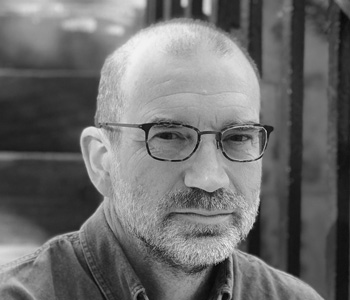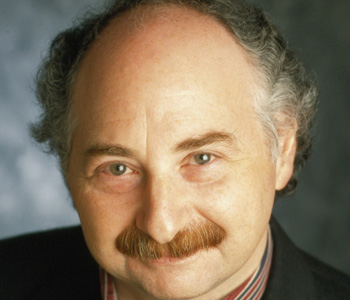Sylvia Lavin
Kissing Architecture
Princeton University Press
136 pages, 6 x 7 1/4 inches
ISBN 978 0691149233
This book is about image-architecture and the surprising apperceptive shifts that take place when today’s culture of ephemeral images and the stolid material traditions of architecture choose to embrace.
Could you describe the building your dentist is in?
Most of us could not. This amnesia is only partly explained by the fact that, on our way to the dentist, we are generally preoccupied with worry. Nor is our obliviousness explained by the fact that we typically occupy the public realm, wherein sit most buildings we see and use, in a state of what Walter Benjamin called distraction.
Rather, the social contract that once existed between architecture and social attention—still in operation in works such as Robert Venturi’s I Am A Monument and rooted in a shared sense of hierarchy, autonomy and legibility—has been breached by the incursion of an infinite range of interlopers. All kinds of devices from advertising to ipods to gps gadgets now talk to us while we are on our way to the dentist.
The net result is that, absent an exaggerated frame such as that produced by what has been called the “Bilbao Effect” that surrounds buildings most of us could describe, we have an almost total hysterical blindness where architecture is concerned.
Given how much of the planet is covered by buildings, finding a way to see them, making sure they merit looking at, and understanding that these are mutually constitutive forms of visibility seems more than worth the effort.
Kissing Architecture seeks to entice the way we understand architecture away from the register of architectural criticism of the 1990s—which, akin to the orality of dentistry, was full of probes, spit, and scraping critique—into the atmospheres of embrace, where flavor, succulence, and sensation are reintroduced into the province of intellected criticism.
The subject of much discussion in Kissing Architecture is new genre works by producers who are commonly called artists but that I call “super architects.”
Pipilotti Rist and Doug Aitken, for example, produce works of super-visibility by soliciting several of the different types of attention we have developed for viewing video, painting, architecture, sculpture, cities, etc. at once and by putting these manifold attention states into dynamic play. The structure of this combine I liken to the kiss, a centrifugal force of attraction between two exquisitely similar but yet distinct things.
Culture in a state of kissing, in a complex state of multiplicity, produces a new form of eidetic experience. It is highly memorable experience. But, unlike the memories inflicted by visits to the dentist, generated by pain and fear and producing blindness and amnesia, these experiences permit the momentary generation of new affects that in turn form the basis of alternative possibilities in the social aesthetic world.
I hope Kissing Architecture is a pleasure to read. Yve-Alain Bois called the book a sip of champagne. That made me happy.

Kissing Architecture seeks to entice the way we understand architecture away from the register of architectural criticism of the 1990s—which, akin to the orality of dentistry, was full of probes, spit, and scraping critique—into the atmospheres of embrace, where flavor, succulence, and sensation are reintroduced into the province of intellected criticism.
One of the most compelling themes in contemporary art theory is the controversy surrounding the question of “medium specificity.” That is, whether or not anything but habit and convention determine the conceptual shapes and extents of works of art, whether there is anything irreducibly painterly about painting or architectural about buildings.
This has drawn the attention not only of some of the most interesting thinkers in this field, but has come to concern a wide variety of fields. Because the limit or boundary between things, things as such, which was once understood in positivist and essentializing terms, and then understood in relation to constructed disciplines and regimes, is now being rethought in order to produce a generative tension between cultural autonomy and political engagement.
How things separate and combine, whether as apparently different as art forms or nations, how they get reformatted as they flow through global currents of money and politics, and how they manage the specificities of their material ontologies while at the same time fold easily into virtual and digital mediums, constitutes an urgent set of issues for contemporary cultural theory.
Another question that arises from what Rosalind Krauss has called this “post-medium condition” concerns our understanding of experience. If works of art are neither what classical art theory deemed “positive” nor “arbitrary” in their nature, there must be a corollary transformation in our understanding of the ways in which works of art shape experience. If the work of art addresses the viewer/subject not through the essential organ of taste or through the over-determinations of convention, can the work of art then induce a new category of experience that relates affect to intellection rather than pits them against each other?
Many of these ideas are explored by Deleuze, Sloterdijk and others with respect to the philosophy of art generally. But I argue that image-architecture in particular affords an especially useful model of experience. Because image-architecture is rendered vivid by immersion and intensified by the ways in which it multiplies the forms of attention required by the viewer. The experience of image-architecture is specific in the way that it permits new feelings, new thoughts and new social realities to develop, and diagrammatic in the way it models an expanded notion of experience as such.
I’d like readers to fall into the lush and alluring image of Pipilotti Rist’s Pour Your Body Out, like Alice fell into Wonderland. A short read later, I’d like them to wake up in the little house called Raspberry Fields, a house that pulses with long pink eyelashes for shingles. I’d like the reader to be unsure of whether or not they picked up the Eat Me or Drink Me bottle along the way.
If Kissing Architecture describes the new romance between image and architecture, I’d like the book to introduce works of art to each other that might never have imagined themselves side by side nestled amongst the same pages and I’d like to think that the normally distant worlds of art and architectural readership will get a small thrill by rubbing up against each other through and through the veil of slightly defamiliarized questions.

Absent an exaggerated frame such as that produced by what has been called the 'Bilbao Effect' that surrounds buildings most of us <em id="">could</em> describe, we have an almost total hysterical blindness where architecture is concerned.
Architecture is a field that lacks criticism. It has theory. It has journalism. It has broad popular appeal—so much appeal that every Tom, Dick and TV watcher thinks he’s a critic.
But distinguishing the building your dentist is in from the supermarket does not critical skills make, which I consider to be a combined effort of affective language and critical content.
Kissing Architecture attempts to bring the experience of image-architecture together with its intellection through the device of writerly critique passionée.




We don't put paywalls. We don't distract you with ads. We don't sell your data.
Please help to keep this running!